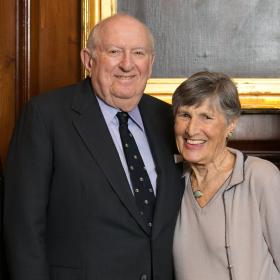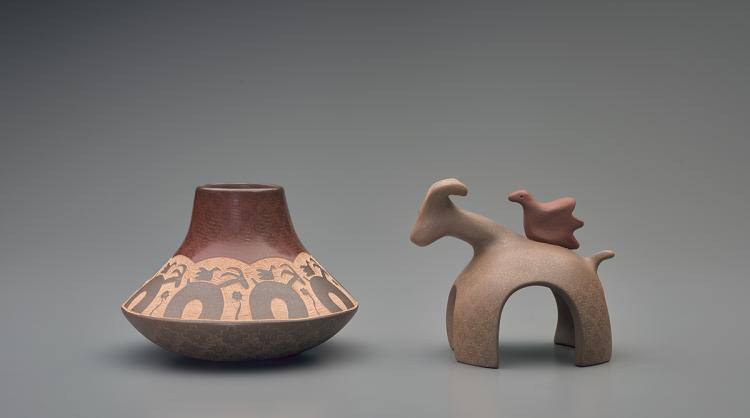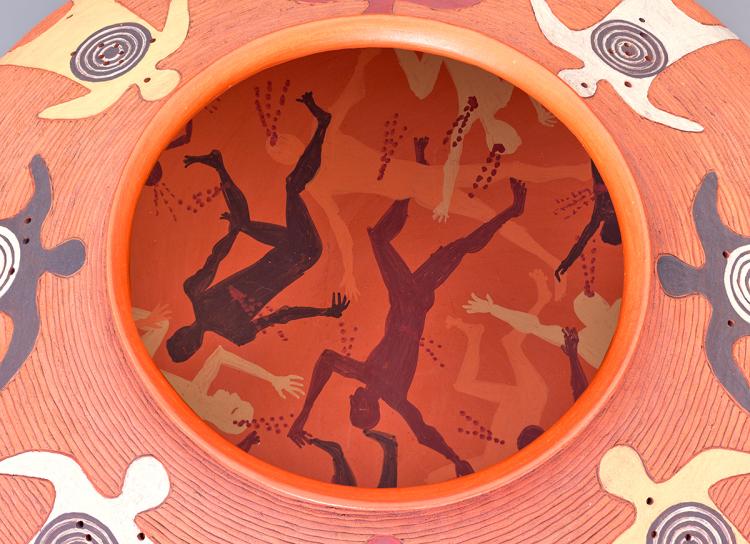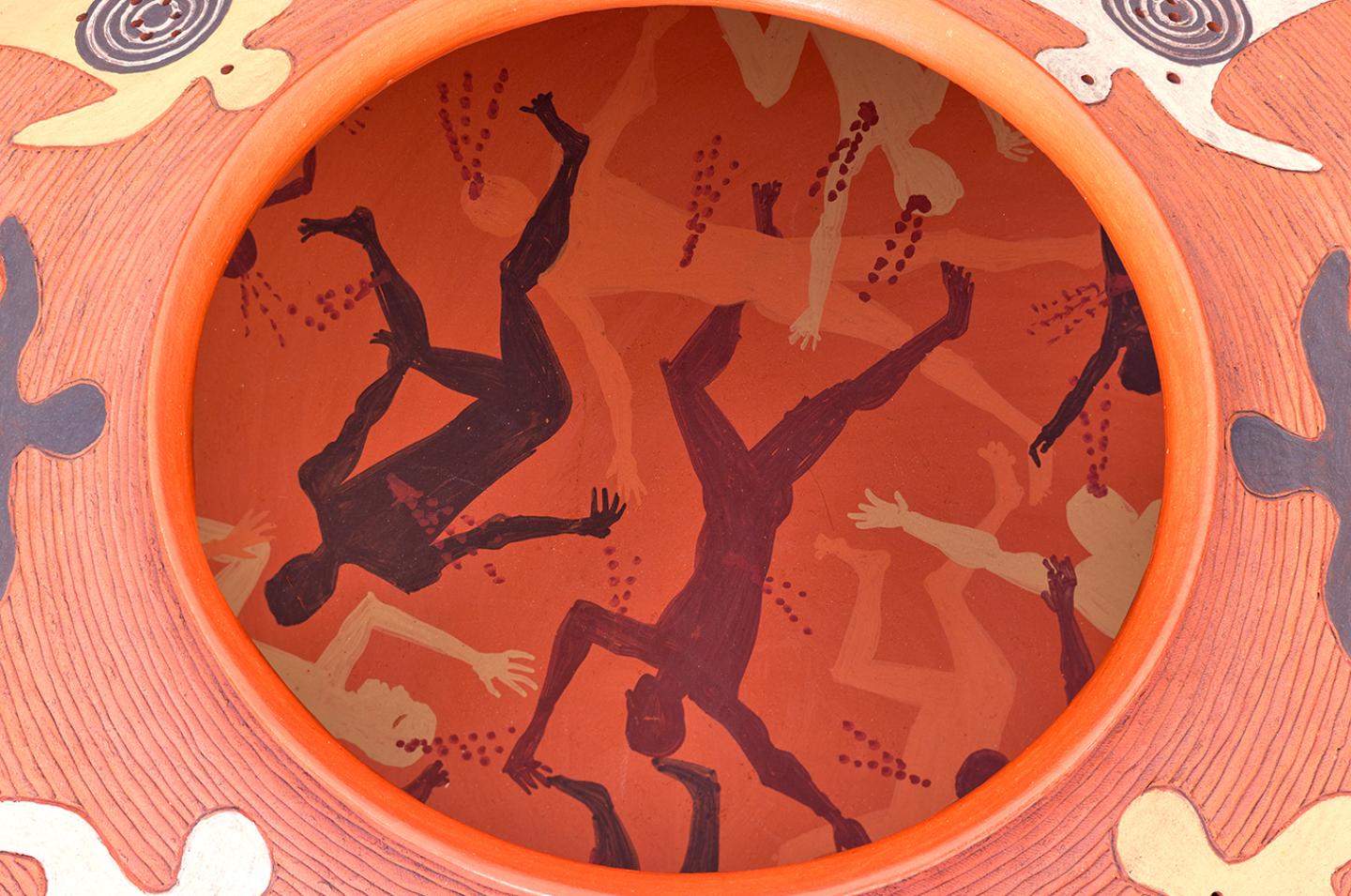



John Furth ’52 and Hope Furth have donated a collection of more than 250 Native American artworks to the Yale University Art Gallery, a pivotal gift during a period of transition for Yale’s stewardship of Native American and Indigenous art. The Yale Peabody Museum will also be involved in caring for and displaying the collection.
“We chose to give this collection to Yale because we believe that the Native American students at Yale, as well as the general population, will benefit from having these pieces as part of their educational experience, and that the Yale University Art Gallery and the Peabody are appropriate venues for display,” the Furths say.
“It is just as important that the objects in our collection be available for study as they pertain closely to art and history. We’ve chosen to make the gift at this time while we are still in good health and able to enjoy seeing it both displayed and studied. We hope it inspires other gifts of Native American art to Yale and for people to come and visit Yale’s collections. We also hope it promotes a wider discussion and appreciation for Native American art and culture.”
Yale University Art Gallery Director Stephanie Wiles says that the gift will be transformative, greatly expanding the gallery’s Native American art holdings with strong representation of work by Plains, Navajo, and Hopi makers.
“The Furths’ collection, assembled over many years and with great thoughtfulness, arrives at an important time for the study of Indigenous art at Yale,” Wiles says. “These objects have so much to teach us as curators, and scholars, and we look forward to imparting that knowledge across the university, and with visitors to the gallery. We are grateful for the confidence that the Furths have shown making this gift to Yale, and delighted for the opportunity to share this collection widely.”

‘Untold Depths of Stories and Significance’
Royce K. Young Wolf, the Yale University Art Gallery’s inaugural assistant curator of Native American Art, says the collection encompasses a rich array of items crafted by ancestral makers as well as remarkable works by leading contemporary artists.
“The collection represents the breadth of Indigenous cultures, showcasing their materials, iconography, and styles, particularly from the Southwest,” Young Wolf says. “It is beautifully well-rounded, reflecting meticulous care and maintenance over the years. These pieces hold untold stories and deep significance, illustrating changing practices and individual innovation.”
Young Wolf began as Yale’s first Native American Art curator last summer, and she is jointly appointed at the Peabody Museum. Her role is the first dual position between the Art Gallery and the Peabody, and aims to bridge the institutions to enable collaboration and critical thinking about what it means to exhibit objects from Indigenous cultures in fine art galleries and ethnographic collections.
“Native American cultural materials have long been a significant part of Yale’s anthropological collections, but the Furths’ donation to the gallery expands the contexts in which to study Native American creative practice at Yale,” says Mark Mitchell, the gallery’s Holcombe T. Green Curator of American Paintings and Sculpture. “With Royce recently joining us as a curator, we are building a vibrant presence of Native American art in the gallery so that visitors can see Indigenous creativity represented in the context of fine art, not just anthropology.”

Treating Cultural Materials with the Utmost Care
The Furth Collection comes to Yale as the university reflects on how it collects, studies, and displays Indigenous art. In January, new regulations under the Native American Graves Protection and Repatriation Act (NAGPRA) went into effect, providing updated guidelines for collecting institutions handling Native American cultural materials.
“The Furth Collection’s arrival is well-timed to benefit from the new guidelines,” Mitchell says. “At the Wurtele Study Center at Yale’s West Campus, we have appropriate spaces for tribal representatives and artists to look at the materials in the collection and consult with us about them.”
Young Wolf says that consultation with Indigenous artists and cultural knowledge leaders often bring new insights to Native American cultural materials.
“Cultural advising helps us ensure we present everything as accurately as possible and handle all of these materials with the utmost care,” Young Wolf says. “Some Native American cultural materials have strict protocols for handling and storage, or need greater culturally responsive care for display and stewardship.
Consulting with artists helps us learn more about what materials were used to create the artworks, which helps inform what conservation and testing can be done. Of course, we also need to gather all of the information we can so that the interpretive texts we share with the public will be as accurate as possible.”
Young Wolf says that in meeting with the Furths, it was clear that they were all aligned in their passion for the artworks and desire for them to receive the best possible care.
“They were vocal about wanting to meet and build a relationship with me and were eager to learn how I’d approach their collection,” Young Wolf says. “The Furths have been collecting Native art longer than I’ve been alive, and they have been terrific partners in ensuring that the collection will have a powerful impact at Yale.”
